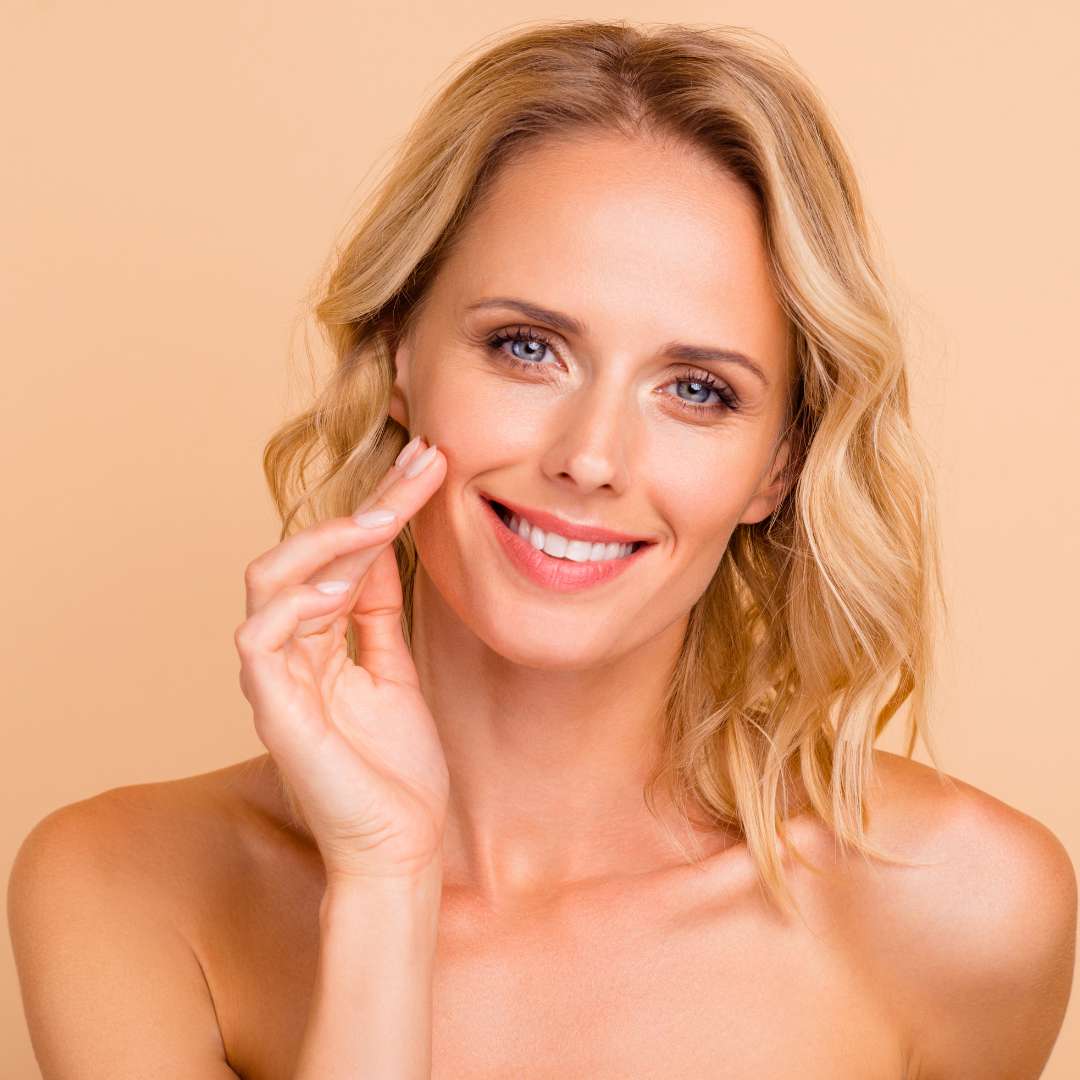In recent years, the increasing demand for non-surgical cosmetic treatments has underscored a paradigm shift in the beauty and wellness industry. With an ever-growing emphasis on non-invasive alternatives, individuals are increasingly seeking solutions that offer aesthetic enhancements without the need for surgical interventions. There are two prominent contenders in the non-surgical cosmetic arena: Botox and fillers. As we navigate the landscape of facial rejuvenation in this article, our comparative analysis will shed light on the unique attributes of each option, allowing prospective clients to make informed decisions tailored to their specific aesthetic goals.
What are Neurotoxins?
Botox, hailing from the bacterium Clostridium botulinum, has become a pivotal player in the domain of non-surgical aesthetic procedures. Boasting a composition centered around a refined form of the botulinum toxin, Botox operates by temporarily immobilizing specific muscles, effectively reducing the prominence of wrinkles and fine lines. This neuromodulating agent disrupts the usual signaling between nerves and muscles, intercepting muscle contractions associated with aging-related facial expressions. Botox is the original neurotoxin, but there are several other neurotoxins available to consumers in today’s market that are equally effective. Botox is a brand name, much like Puffs is a brand of tissues. At Trouvaille Tinley Park, we offer Botox, Jeuveau, Dysport and Xeomin. Our skilled practitioners administer injections with precision, tailoring each treatment to address individual concerns and achieve results that seamlessly harmonize with one’s natural features.
Primarily utilized to soften the appearance of frown lines, crow’s feet, and forehead wrinkles, users can expect discernible results within days, with the full impact typically unfolding within one to two weeks. As a temporary solution, neurotoxins require periodic maintenance sessions to maintain ithe rejuvenating effects, presenting an attractive option for those in pursuit of a nuanced and adaptable approach to facial refinement.
What are Dermal Fillers?
Dermal fillers represent a versatile category of non-surgical cosmetic enhancements designed to address volume loss and mitigate the visible signs of aging. Composed of various substances such as hyaluronic acid, a naturally occurring component in the skin, dermal fillers work by restoring volume and hydration to targeted areas. Hyaluronic acid retains moisture, contributing to a plump and youthful complexion. This biocompatible substance is gradually absorbed by the body over time.
Common applications of dermal fillers encompass the smoothing of nasolabial folds, marionette lines, and the augmentation of lips and cheeks. By strategically injecting fillers into specific facial regions, injectors at trustworthy spas and clinics achieve a harmonious balance, providing clients with natural-looking and rejuvenated results. The outcomes of dermal filler treatments are often immediate, offering individuals the opportunity to witness a refreshed appearance in a single session. As an added benefit, the effects of dermal fillers typically endure for about a year, providing a long-lasting solution to facial volume restoration and contour refinement.
Key Differences Between Neurotoxins (Botox) and Fillers
Distinguishing between neurotoxins and dermal fillers involves somewhat of an understanding of their respective compositions, mechanisms of action, longevity of results, and ideal applications within the realm of non-surgical cosmetic enhancements.
The substances employed in these treatments vary significantly. Neurotoxins rely on a purified form of the botulinum toxin, while dermal fillers, often containing substances like hyaluronic acid, work to restore volume and hydration in the skin. Botox operates through muscle relaxation, impeding nerve signals to targeted muscles and reducing the appearance of dynamic wrinkles caused by facial expressions. In contrast, dermal fillers function by adding volume to specific areas, replenishing lost facial volume and smoothing out static wrinkles and fine lines.
The longevity of results diverges between the two treatments. Neurotoxins, with their muscle-relaxing action, typically provide results that last for three to six months before requiring a follow-up session. On the other hand, dermal fillers, designed to address volume loss, often yield results that endure for six months to two years, depending on the type of filler used.
Neurotoxins are particularly effective for treating expression lines such as frown lines, crow’s feet, and forehead wrinkles. In contrast, dermal fillers excel in enhancing volume in areas like nasolabial folds, marionette lines, and lips, providing a comprehensive solution to facial contouring and rejuvenation. Understanding these key differences allows individuals to make informed decisions based on their unique aesthetic goals and preferences.
Benefits of Neurotoxins and Fillers
Neurotoxins (Botox) and dermal fillers each bring distinctive benefits to the table, catering to specific aesthetic concerns and preferences within the non-surgical cosmetic landscape.
One of the primary advantages of neurotoxins lies in its efficacy in addressing dynamic wrinkles, which result from repeated facial muscle movements. By temporarily relaxing targeted muscles, neurotoxins effectively minimize the appearance of frown lines, crow’s feet, and forehead wrinkles. This muscle-relaxing action provides a smooth and rejuvenated facial appearance, offering individuals the opportunity to achieve a more youthful look without resorting to surgical interventions.
On the other hand, dermal fillers shine in their ability to add volume and contour specific facial areas. Ideal for addressing static wrinkles and fine lines that result from the natural aging process and volume loss, fillers, often composed of substances like hyaluronic acid, restore a youthful plumpness to the skin. This volumizing effect not only diminishes the appearance of lines but also enhances facial contours, particularly in regions such as the cheeks, lips, and nasolabial folds. The versatility of fillers makes them a preferred choice for individuals seeking comprehensive facial rejuvenation by restoring lost volume and achieving a well-defined, harmonious aesthetic. Ultimately, the choice between neurotoxins and dermal fillers depends on the individual’s desired outcomes, highlighting the importance of personalized consultation to determine the most suitable treatment plan.
Potential Risks and Side effects
While both neurotoxins and dermal fillers are generally considered safe, they share common and mild side effects such as temporary redness, swelling, and bruising at the injection site. Discomfort or tenderness may also be experienced, typically resolving within a few days. These reactions are part of the body’s normal response to the injection process.
However, specific risks differ between the two treatments. Neurotoxins, known for their muscle-relaxing properties, may pose a risk of asymmetry or unintended changes in facial expression if not precisely administered. Rare side effects may include eyelid drooping or difficulty closing the eyes, typically temporary in nature. On the other hand, dermal fillers carry a slight risk of uneven distribution, potentially resulting in lumps or nodules under the skin. In extremely rare cases, there may be a risk of vascular compromise leading to tissue damage. To mitigate these risks and have any side effects reversed, it is imperative for individuals to undergo these treatments with qualified and experienced nurse injectors who prioritize safety and employ best practices in injection techniques. Thorough discussions about medical history and expectations with the chosen provider are crucial for a comprehensive understanding of potential risks and side effects associated with neurotoxins (Botox, Jeuveau, Xeomin or Dysport) and dermal filler treatments.
Pro-Tip: When trying to determine which treatment will best meet your goals, remember: Botox “freezes” muscles to prevent wrinkles from forming, whereas fillers fill areas that are missing volume.
Choosing the right treatment for you
Selecting the optimal non-surgical cosmetic treatment requires a thoughtful and informed approach. Begin by scheduling a consultation with a qualified professional to discuss your specific aesthetic goals and concerns. During this consultation, articulate your desired outcomes and inquire about the injector’s experience with both neurotoxins and dermal fillers. Consider factors such as your budget and the maintenance requirements of each treatment. Understanding the longevity of results and the potential for follow-up sessions is crucial in aligning your expectations with the chosen procedure. Additionally, ask for before-and-after photos to visualize potential outcomes. By engaging in an open and thorough dialogue with a seasoned professional, you can make an informed decision tailored to your unique preferences and needs.
Combining Neurotoxins and Fillers
The synergistic combination of neurotoxins and dermal fillers offers a comprehensive approach to non-surgical cosmetic treatments, allowing individuals to address multiple aesthetic concerns in a single, harmonious treatment plan. While neurotoxins excel in smoothing dynamic wrinkles by temporarily relaxing targeted muscles, dermal fillers contribute to the restoration of volume and contouring, effectively addressing static wrinkles and fine lines. By strategically combining these treatments, practitioners can create a customized approach that achieves a more youthful and balanced facial appearance. For instance, neurotoxins may be employed to diminish forehead lines and crow’s feet, while dermal fillers concurrently restore volume to the cheeks and lips. This dynamic pairing provides a thorough treatment with a tailored solution, ultimately delivering a natural and refreshed outcome.
Navigating the realm of non-surgical cosmetic treatments involves a careful consideration of options to align with individual aesthetic goals. Key takeaways from this exploration include the distinctive benefits of all types of neurotoxins, specializing in treating dynamic wrinkles, and dermal fillers, excelling in volume addition and contouring. Understanding the potential risks and side effects associated with each treatment is paramount, emphasizing the importance of seeking qualified professionals for safe and effective procedures. For those seeking a comprehensive approach, the combination of any brand of Botox and dermal fillers provides a versatile solution to address multiple concerns and achieve a harmonious rejuvenation. As you embark on your aesthetic journey, we encourage you to schedule consultations with experienced injectors, openly discussing your goals and considerations. In doing so, you empower yourself to make informed decisions tailored to your unique needs, ensuring a satisfying and confidence-boosting outcome.
FAQs
Can I combine neurotoxins and dermal fillers with other cosmetic procedures?
Answer: Combining these treatments with others, such as chemical peels or laser therapy, is possible. However, it’s essential to consult with your practitioner to determine the appropriate timing and combination based on your individual skin needs and desired outcomes.
What steps can I take to minimize the risk of side effects?
To minimize side effects, choose a qualified and experienced nurse injector. Discuss your medical history and expectations thoroughly during the consultation. Following pre- and post-care instructions, including avoiding certain medications and activities, can also contribute to a safer and more comfortable experience.
Can Botox and fillers be used to address concerns in areas other than the face?
Answer: Yes, practitioners may use neurotoxins and dermal fillers to address concerns in areas such as the neck and hands. These versatile treatments can be tailored to meet a range of aesthetic goals beyond facial rejuvenation.
Are there any age restrictions for neurotoxins and dermal filler treatments?
While age is a consideration, the suitability of these treatments depends more on individual skin condition and aesthetic goals. A consultation with a qualified professional is crucial to assess the specific needs and expectations of everyone.




